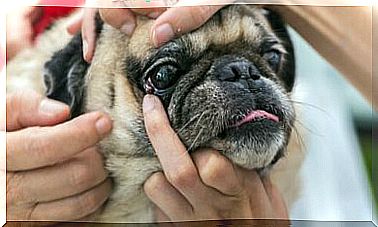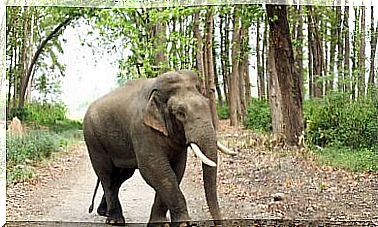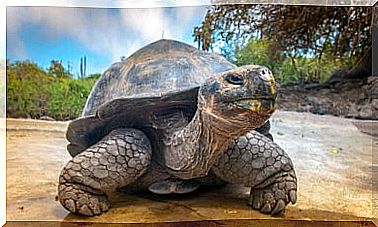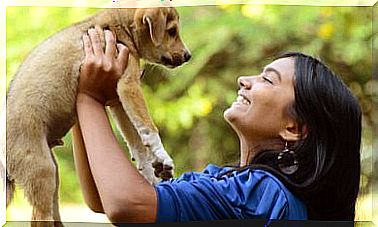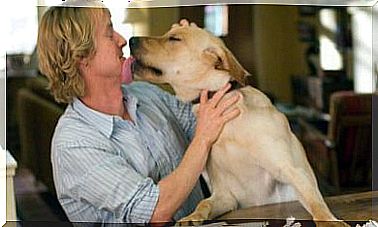Ocelot: Characteristics, Behavior And Habitat

The ocelot is a medium-sized feline typical of the American continent. Of great elegance and beauty, today it is a protected animal, since it was on the brink of extinction.
However, it is still the target of hunters looking for its fur, dotted with beautiful rosettes and in demand by the fur industry. In addition, their number is also diminished by the constant destruction of their natural habitat at the hands of man.
A lovely wild cat
Better known as an ocelot, the Leopardus pardalis is a nocturnal, solitary and territorial carnivorous mammal that usually sleeps during the day on tree branches or hidden among vegetation. Its name comes from océlotl , a word of Nahuatl origin, the language spoken by the Aztecs.
This animal has 10 subspecies distributed from the south of the United States to the north of Argentina; The funny thing is that in each place it receives different names. For example: tigrillo, gato oza, jaguarcito or manigordo.
On the other hand, it is an animal that adapts to different habitats. This is why it can be found at:
- Humid jungles.
- Mountainous areas.
- Semi-desert regions.
- Grasslands
- Swamps
Physical characteristics of the ocelot
Did you know that no two ocelots are the same? It is due to the fact that the design of its coat, that combination of dark stripes and rosettes on a yellowish background, is different in each specimen.
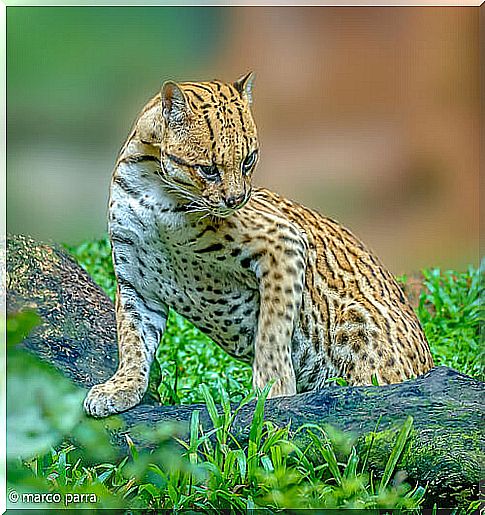
Beyond this detail, the beauty and magnificence of this feline is always out of the question. Among the main physical characteristics of this animal, the following stand out:
- Height : between 40 and 50 centimeters.
- Weight : from 8 to 16 kilograms.
- Length : between 55 centimeters and 1 meter —head and body—.
- Tail: ringed, with a black cap and a length of 30 to 45 centimeters.
- Head: solid.
- Eyes: large and expressive; They are brown or golden yellow in color and well adapted to changes in light.
- Ears: large and semi-rounded.
- Legs: short and solid, provided with pads on its soles, allowing it to move silently.
- Nails: long, sharp and retractable.
- Coat: short and smooth.
- Color: it usually varies from yellow-orange in the specimens that live in wooded areas to more grayish in those that inhabit arid places.
- Life expectancy : up to 20 years in captivity.
The ocelot, a versatile hunter
When it comes to providing food, the ocelot can hunt both alone and in family groups. To do this, it mainly uses the senses of hearing and sight.
In some cases, it stalks its prey and, in others, it sneakily waits for them, then swoops in to attack. As it is a great climber, it can also catch prey in trees.
The diet of this feline consists mainly of small and medium mammals and reptiles. However, it also hunts birds and rodents. In addition, it can be a good fisherman and even eats turtle eggs.
The sense of smell is highly developed in Leopardus pardalis. It uses it to examine the prey and to recognize the territory marked with urine by other males of the species.
The female, for her part, gives birth to between one and four cubs every two years, after a gestation period that can extend up to 85 days. It is also an animal that manages to reproduce successfully in captivity.
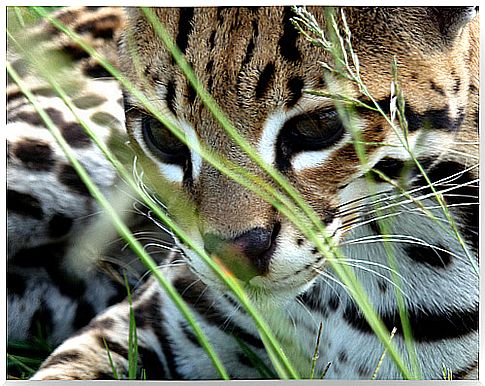
A wild cat is not a pet
Like all felines, the ocelot captivates us with its beauty and poise. Therefore, it is also captured to be sold as a pet. Perhaps many remember or have heard of Babou, the beautiful specimen of ocelot that the great Salvador Dalí had.
However, humans must understand that it is a wild animal and thus resist the temptation to domesticate it.
To get the cubs destined for this market, the hunters usually kill their mothers ; This only further decimates the population of these precious wild cats, still haunted by the fur industry and by the continuous destruction of their natural habitat.
Images courtesy of Ana_Cotta, Marco Parra and Justin Peebles.
